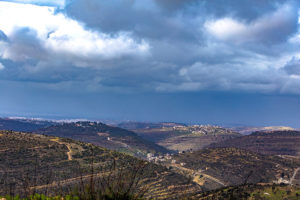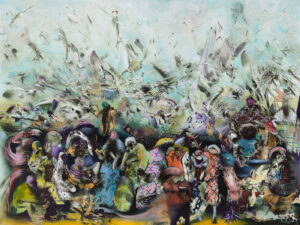The best writing in Alligator & Other Stories starts a different conversation about Arab belonging and assimilation in America, through the prism of Syrian experience.

Alligator & Other Stories by Dima Alzayat
Pan McMillan (2020)
ISBN 9781529029895
The store clerk who called the police on George Floyd worked for CUP Foods in south Minneapolis—a family-owned Palestinian inner-city convenience store. The owner told the New York Times that the teenage clerk had only been in the US for a year and left CUP Foods in the explosion of the nationwide and international protests against Floyd’s brutal murder.
Four years earlier, in 2016, a 90-second confrontation between Alton Sterling and two white police officers left Sterling dead in the parking lot belonging to Triple S Food Mart in Baton Rouge, Louisiana. The grocery store—this time owned by Yemeni Arabs—was not directly implicated in Sterling’s death like CUP Foods, although Triple S’s parking lot is known as a local crime hot spot.
Across America from Minneapolis and Baton Rouge to Akron, Ohio, where my Jordanian relatives own shops, Middle Easterners run grocery and liquor stores in some of the poorest, most deprived U.S. neighborhoods. By 2017, the traditional Spanish bodegas of New York City belonged to Yemenis. In Detroit, sons of Yemeni families had left their parents’ or grandparents’ stores, and were working their way through college, as hotel doormen or valet parking attendants. For their families and the wider Arab American community, the ghetto supermarket has been the road to the American dream—a road not open to the majority of their black customers because of race and access to bank loans.
The rise of the Arab in America wasn’t without bloodshed. The eerie and at times dizzying title story “Alligator” in Dima Alzayat’s debut short story collection begins with a 1929 lynching. George Romey, a Syrian grocery storeowner in Lake City, Florida, had been arrested by the police on trumped-up charges. Anti-immigrant prejudice had been building in early twentieth century America, as shown by the newspaper articles reproduced in “Alligator,” as though they have been cut out and pasted into a scrapbook. One from 1905 said that the Syrian “cannot be naturalized because he is not a white man but a Mongolian.” The lynching of Romey took place a year after new codes to the Naturalization Act in 1928 “judicially determined” that Syrians “fall within one of the classes to whom is accorded the privilege of citizenship.”
Two black men in a cell near Romey’s tried not to watch as a white mob came for the grocer. The one who didn’t look away provides one of many character monologues that reveal the continuing personal and social trauma of the lynching. Romey’s wife was shot dead during her husband’s arrest. Romey’s cousin Joseph and his wife raise the dead couple’s four children. Joseph, also a shopkeeper, admits to no one that he sees the silent ghosts of his relatives. The newly extended family quickly left the state, and Joseph and his wife deliberately stop speaking Arabic in front of the kids. By 1940, Romey’s son Samuel lists his ethnicity in a U.S. Census as not Syrian, not Arab, but white.
That road to assimilation culminates in Romey’s great-great grandson, Steven “Bubba” Morelli. Although his past is murky when readers finally meet him in the flesh, he is stalking a big buck in a cypress swamp. He is divorced from his wife, a loner and an outsider ripe for right wing extremism, as emails show.
The trajectory from targeted outsider to assimilation for the generations that follow is just one of the journeys of identity, ethnicity and race that this ambitious story tells. A layering of fictional voices interspersed with non-fiction writing—some real and some fabricated—charts the final passage of some Arab immigrants to identification with and recognition by the dominant white majority.
This is the central paradox of Arab American experience in an increasingly divided United States.
In a recent interview for the London Magazine, Alzayat said that the story was “not only an attempt to recover the experience of US racial violence by early Arab American communities, but also how racialization made Arab Americans both victims and perpetrators of such violence.”
At first, Alzayat’s use of different kinds of writing in the short story—including a script for a psychic reality TV program and a breezy travel article—takes “Alligator” into the realm of the experimental. Romey was the target of anti-American organized hatred and discrimination and he wasn’t the first. Alzayat’s real and false documents’ trail lays bare Florida’s long concerted history of violence against difference.
African-Americans and the Seminole Indians were routinely threatened, hunted down and killed. Alzayat metaphorically connects George Romey to a historic nineteenth century Seminole tribal leader, Halpatter-Micco, the “Alligator Chief.” To evade forced deportation to Oklahoma he and the Black Seminoles, who had married into and lived with the tribe, hid in the Everglades. It was the one place the civil authorities avoided because of alligators.
Eventually when the swamps were drained, up went “the cities, towns and prosperous farms” described by Andrew Jackson in his 1930 speech to Congress, “On Indian Removal,” also reproduced in the short story. The only trace of the Indians in Florida is the persistence of their exotic place names. Yet, the constantly shifting ground of “Alligator” feels ultra modern, with its real and imagined voices and unreliable but somehow still true bytes of information.
Born in Damascus, author Alzayat grew up in San Jose, California and lives in Manchester, in the UK. She studied fiction writing and has won numerous awards. Her strength at deciphering secret codes comes to the fore in the collection’s stories about women.
In “Ghusl,” the ritual purification of the dead before Islamic burial, Zaynab washes and prepares the corpse of her younger brother Hamoud, which in Syria is a defiant act of love that breaks with the patriarchal norms of her religion. The sinister, unspecified circumstances of Hamoud’s violent death, her memories of him and another violent unexplained death in the family, that of their father’s, make a tale of mapping and touching the human body chilling and deeply moving. All the more so as it provokes male outrage at a woman committing so blatant a “sin.”
Another story shows how holding onto one’s name can be a powerful act of female empowerment, self-prophecy and fulfillment. The grandmother in “Daughters of Manāt” tells her granddaughter who attempted suicide: “Listen, there are hundreds of female names in our language, but ours means triumph and nothing else.”
And in the story “Once We Were Syrians” that sense of a possible future is lost or discovered—depending on the generation of the woman
“There used to be a time when our names mattered, when being Syrian meant something. Turn that off. They count us like grains of rice. I can’t bear it. Come closer. Listen.” A great-aunt in San Francisco is speaking to her niece Nadia who wrote a school essay on the Syrian Refugee Crisis. Praise of the essay prompt a flood of memories from the great-aunt, about her own childhood of privilege and prestige in Damascus, as the daughter of a security chief. Their wary and deferential neighbors showered gifts on the family. However, issues of power and dominance scarred the great-aunt’s innocent games of childhood before a fall in family fortunes and escape to the new world.
Some childhood lessons are hard to abandon, even in exile. In her essay, Nadia had written how her great-aunt berated an Iraqi refugee woman, in Arabic, when she came to their front door, hungry with her children. Many of the tales in Alligator & Other Stories contain unbearable family truths.
“Girl in Three Acts” is a rites of passage story. Beneath its outlandish humorous aspects is an examination of the fluidity of religious identity in the Middle East and the complexities of Arab identity in America.
The “Girl” in question comes from a conflicted Syrian-American family. Her grandfather destined for the priesthood suddenly changed his religion. As Alzayat writes in the story, “In under a week Girl’s grandfather left the church and became a Muslim, and asked to marry the woman who would become Girl’s grandmother.”
It was also a family where the men die “inside women” during intercourse. After Girl’s father expired in similar circumstances, her stepmother placed her into care and girl lives in a youth home.
Stroppy, awkward, she wears a hijab out of rebellion and is reluctantly fostered with a white suburban couple. A long lost uncle flies her to Milwaukee to spend a weekend with him and his family. Arab Christians, they insist on taking Girl to church. Chance, stolen kisses with a fourteen-year-old boy improve the situation. Back at home, in school, she berates friends and foes alike then gets her period and feels better.
The best writing in Alligator & Other Stories starts a different conversation about Arab belonging and assimilation in America, through the prism of Syrian experience. An astute observer of worlds both old and new, Alzayat listened hard to her elders, recognized inconsistencies and digs deep into uncomfortable no-go areas. She is a formidable new voice in understanding the complexities of race and identity.
Watch a documentary about the Romey lynching.























































